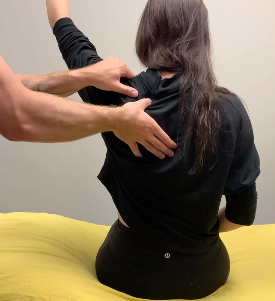Are you ignoring your nagging shoulder pain?
Has it been months and nothing has changed?
Do you even remember how it started?
You’re not alone—and you’re not stuck.
Real Patient Story:
Amanda, a 33-year-old nurse, struggled with dull shoulder pain that turned into sharp pinching whenever she reached above shoulder height. After just a few sessions of chiropractic adjustments and targeted mobilization exercises, she was finally able to lift, reach, and sleep without pain again.
What Is Shoulder Impingement, and Why Does it Matter?
Shoulder impingement occurs when the tendons or bursa in your shoulder are compressed during movement. This usually happens in the subacromial space—the area between your upper arm bone (humerus) and the shoulder blade.
Why does it matter? Because this compression causes inflammation, irritation, and eventually limited range of motion and weakness. Left untreated, impingement can lead to tendon tears or frozen shoulder.
Luckily, chiropractic care can help restore joint mobility, improve shoulder mechanics, and reduce pain—without medication or surgery.
How to Relieve Shoulder Impingement with Chiropractic Care in 5 Simple Steps
Step 1: Avoid Aggravating Activities
Stop doing what makes the pain worse—it’s that simple.
Common triggers:
- Reaching overhead
- Lifting heavy objects
- Sleeping on the affected side
- Sudden, jerky arm movements
When you continue pushing through pain, it worsens inflammation and delays healing. Let your shoulder rest and reset.
Step 2: Ice It Properly
Ice helps decrease inflammation and relieve pain in the shoulder joint.
How to ice effectively:
- Use a cold pack or bag of frozen peas wrapped in a cloth
- Apply over the front and top of your shoulder
- 15 minutes on, 45 minutes off
- Repeat 3–5 times per day
- Never apply ice directly to skin
Step 3: Mobilize with Chiropractic Adjustments and Movement
“Motion is lotion.” When safe and guided properly, gentle motion supports joint health and promotes healing.
Mobility Exercises:
- Pendulum Swing: Let your affected arm hang while gently swinging in circles
- Wall Crawl: Slide fingers up the wall slowly until you feel a gentle stretch
- Scapular Retraction: Pull your shoulder blades together to support better posture
Chiropractors can also help realign your shoulder and spine to optimize movement and reduce compression in the joint.
Step 4: Improve Your Posture
Poor posture = more pressure on your rotator cuff.
Correct posture reduces nerve irritation and reestablishes proper shoulder mechanics.
Postural corrections include:
- Standing with ears aligned over shoulders
- Strengthening mid-back and core muscles
- Chiropractic spinal adjustments
- Ergonomic workstation changes
Step 5: Strengthen the Right Muscles
Strengthening muscles around the shoulder improves stability and prevents recurrence.
Focus on:
- Rotator cuff strengthening
- Scapular stabilizer exercises
- Theraband external rotations
- Wall push-ups
Your chiropractor or physiotherapist can create a rehab plan customized to your lifestyle and body mechanics.
Closing Thoughts
If Amanda’s story resonates with you, know that recovery is possible. Chiropractic care offers a safe, drug-free, and effective way to relieve shoulder impingement, restore function, and get you back to the things you love—pain-free.
Your shoulder pain isn’t something you have to live with. The right guidance makes all the difference.
Call-to-Action
Prefer a self-paced start? Leave your email below to receive our Shoulder Impingement Recovery Cheatsheet
FAQ
Q: Can a chiropractor help with shoulder impingement?
Yes! Chiropractic care addresses both joint dysfunction and muscle imbalances contributing to impingement. Chiropractors offer:
- Joint adjustments
- Soft tissue therapy
- Corrective exercises
- Postural advice
Q: How long does it take to heal shoulder impingement?
Mild cases improve within 2–6 weeks with consistent care. Chronic or severe cases may take longer depending on inflammation and tissue damage.
Q: Can I continue working out with shoulder impingement?
Yes, but with modifications. Avoid overhead lifts and pushing movements. Focus on range of motion and strengthening under professional supervision.

